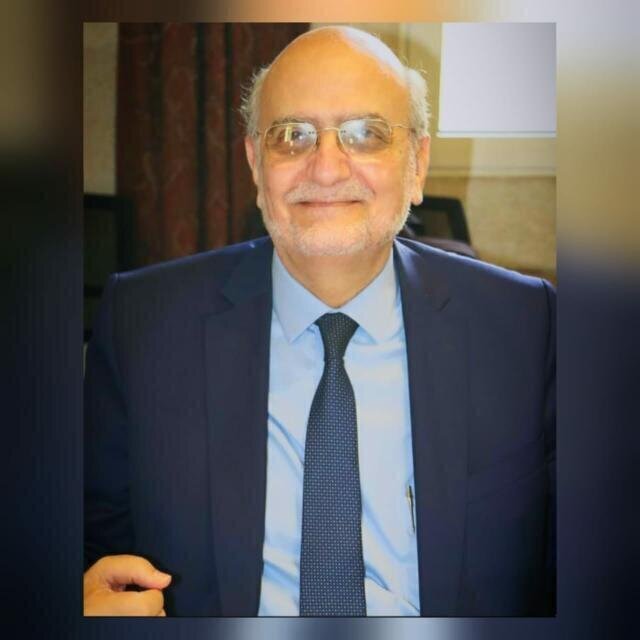Pilgrimage to Saydnaya
Dr. Michel E. Abs
Secretary General of the Middle East Council of Churches
Today is the birthday of our Lady, the Virgin Mary, the lady of the ladies whom the Almighty God favored over the women of the world and chose her to embody in her heart the Master who came to deliver humanity from sin and from the petty self that commands evil.
On the eighth of September, the world celebrates this great occasion, which is great in its effects and in what resulted from it. On the night before the Eid, people from all the religious communities of the nation make a pilgrimage to the monastery of Our Lady of Sadnaya, in Syria, for blessings, prayer and meditation. There, man feels close to his Lord, his Creator, his Prime Mover, the One who breathed into his dust the breath of life , the Almighty who takes care of him and who protects him.
Visiting the monastery and contemplating its venue is an unparalleled experience. The pilgrims begin by lighting candles in the ‘Shaghoura’ shrine and crown it by taking pictures of themselves in front of the murals of Anna and Joachim, the parents of the Virgin, in whose womb the Father has deposited the Incarnate.
According to the available texts, Anna and Joachim did not have children, so the angel of the Lord came to them and announced to them the birth of the Savior conceived by their daughter Mary, whom they were keen to raise in righteousness. At the age of three years she was presented to the temple where she lived until she became engaged to Joseph.
As for the celebration of the birth of the Lady, it goes back to the middle of the fifth century AD in Jerusalem, when a church was dedicated to her name. Then, in the following century, the celebration moved to Constantinople, where St. Romanos the Psalmist wrote the hymns for the feast.
After that, the celebration of the feast moved from east to west.
The celebration begins in Saydnaya on the 7th of September with the sacred procession of the icon of the Holy Virgin in the city of Saydnaya and ends with the arrival to the monastery of the Lady and the establishment of the sunset prayer. This includes various celebrations and activities carried out by the parishioners and believers who come from all over the country. But it is worth noting that the believers who come from outside Syria are constantly increasing and diversifying because of the high symbolism of the Virgin on the faith level as well as on the national and cultural levels.
During the events that swept Syria in the past decade, this monastery was attacked in an attempt to occupy it and bring it to the same fate as the monastery of St. Thecla in Maaloula. Both monasteries are located in a delicate area in terms of geographical terrain, which is reflected in the military strategy, as access to them is easy through Qalamoun and the mountain range in Eastern Lebanon.
But what saved the monastery was the solidarity of the people of the area who did not allow anyone to penetrate the area supported in their endeavor by the military forces.
When we visited the monastery last July with a delegation from the international churches, we found it overflowing with life with hundreds of believers who came to it from all sides and we felt the fragrance of the history of Eastern Christianity, whose roots are deep, gushing with life.
As for what adds to the glamor of the monastery, are the “Pilgrims,” (the Hajjét) the nuns of the monastery, who treasure in their hearts all the love with which the Lord loved the world and gave Himself for it.
The kindness, tenderness and piety that exude from the eyes of the Pilgrims and from their behavior tell you what the authentic Eastern Christianity is. They are a school in themselves, they do not need curricula or teachers...their behavior is enough!
From its high altitude, this monastery overlooks the hills of the Levant, where Christianity spread first, and it remains a witness to time and to the rooting of Christianity in the land of the Levant, where messengers were distributed preaching the good word to people, in the name of the Father, the Son and the Holy Spirit. This monastery, in which I personally received the sacrament of baptism, will remain the pilgrimage of Christians and non-Christians, bringing together the people of the Antiochene Levant and the Arab world. This monastery was built in the name of the Mother of God, the Virgin Mother, and the mother is the one who gathers, more so if she is the Mother of the Incarnate Master.
In the end, we must conclude this humble article with the words of this hymn, simple in its words and profound in its meanings:
“Your Nativity, Virgin Mother of God,
Has brought joy to the whole world,
Because through you has risen the Sun of Truth,
Christ is our Lord.”

